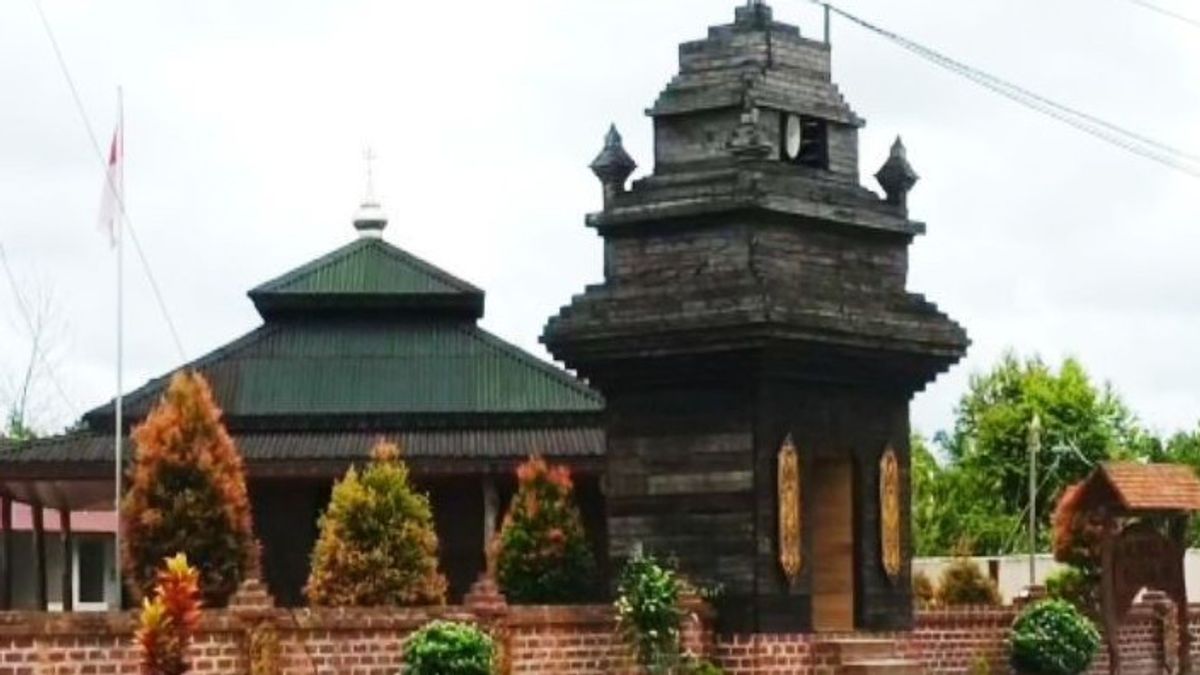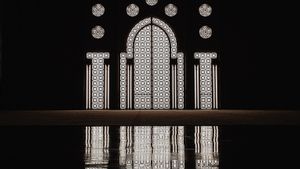JAKARTA - The Musala As Salam on Jenderal Sudirman Street KM 71, Terawan Village, Seruyan Regency, Central Kalimantan Province, has attracted public attention. There are many reasons why the prayer room in this remote place is talked about by many people.
Broadly speaking, this prayer room has a unique and attractive design, and is made from ironwood waste.
From the outside, the prayer room which is on the side of the Trans Kalimantan South Poros road connecting Sampit and Pangkalan Bun, is indeed similar to the buildings on the islands of Java and Bali.
This can be seen from the gate reminiscent of many buildings on the islands of Java and Bali, while the roof of the three-story prayer room resembles a typical building of an ancient mosque in Demak.
However, the material for this prayer room is dominated by ironwood. The prayer room fence is made not high so that the main building looks unhindered from the outside.
Especially if you look closely, there are typical Dayak ornaments, one of which is a telabang or telawang with typical Dayak carvings installed on the left and right of a sturdy gate. Telawang is a kind of shield used for self-protection of the Dayak community.
The characteristic smell of wood interspersed with a fragrance similar to agarwood can be smelled when entering the gate which resembles a passageway to a gate. From here, the unique view of the mosque is more visible and felt. Looking closely at this sturdy wooden musala, the congregation is invited to imagine the atmosphere of the traditional buildings of the kingdoms of the past.
The engraving of the Al-Quran Mushaf from ironwood roots is on the right side of the entrance to the prayer room. While on the left and right walls of the prayer room there are four fairly large windows.
A very interesting sight, the prayer room which was inaugurated on July 7 2017 is about 90 percent of the building construction made of ironwood. Wood with the Latin name "eusideroxylon zwageri" or commonly called ironwood is one of the most famous and strongest woods in its forest habitat in Kalimantan.
SEE ALSO:
And most of the ironwood used for the construction of the prayer room turned out to be waste or ironwood which had been considered unused.
Basuki, who is a donor to the construction of the As-Salam Mosque, said that the prayer room was built on an area of 25x22 meters. The outer building of the prayer room measures 11x11 meters, while the inside measures 7x7 meters with a capacity of 40 to 50 members of the congregation.
The construction of the mushalla is designed to combine the characteristics of Javanese, Dayak, and Banjarese. Basuki called it an amalgamation of diversity, even in its implementation he was also assisted by many non-Muslim colleagues.
The construction uses ironwood waste, some of which are found in former forest areas. Some are found by digging because they are buried in the ground.
The wall of the prayer room is one part that is quite unique and interesting. While the walls of wooden buildings usually use elongated planks, this musala wall uses pieces of ironwood or ironwood logs that are arranged which are then glued together using wooden pegs and wood glue.
There is no doubt about the strength of the walls. Each piece of ironwood rods arranged into a wall has a thickness of 10 cm each. The total number of iron balls used was 897 pieces.
"The construction will take about three years. There are still some parts that will be completed. That's why we are looking for craftsmen who are not only great, but also patient," Basuki said as quoted by Antara.
The English, Chinese, Japanese, Arabic, and French versions are automatically generated by the AI. So there may still be inaccuracies in translating, please always see Indonesian as our main language. (system supported by DigitalSiber.id)

















